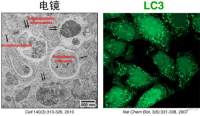Visualization of Sperm Accessory Structures in the Mammalian Spermatids, Spermatozoa, and Zygotes by Immunofluorescence, Confocal, and Immunoelectron
互联网
互联网
相关产品推荐

Recombinant-Rat-Amyloid-like-protein-2Aplp2Amyloid-like protein 2; APLP-2 Alternative name(s): Sperm membrane protein YWK-II
¥15302

PREB/PREB蛋白/Mammalian guanine nucleotide exchange factor mSec12蛋白/Recombinant Human Prolactin regulatory element-binding protein (PREB), partial重组蛋白
¥69

SP/SP蛋白Recombinant Fruit fly Accessory gland-specific peptide 70A (SP)重组蛋白Paragonial peptide B Sex peptide Short name: SP蛋白
¥2832

自噬共聚焦(confocal)成像拍照服务
¥2000

Recombinant-Human-Cation-channel-sperm-associated-protein-2CATSPER2Cation channel sperm-associated protein 2; CatSper2
¥13496

